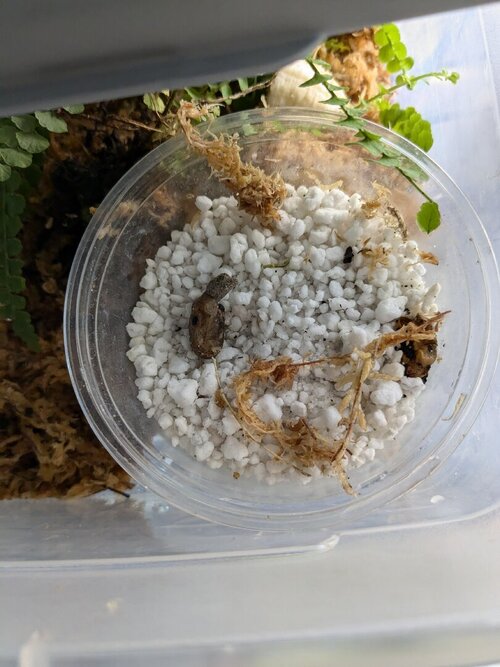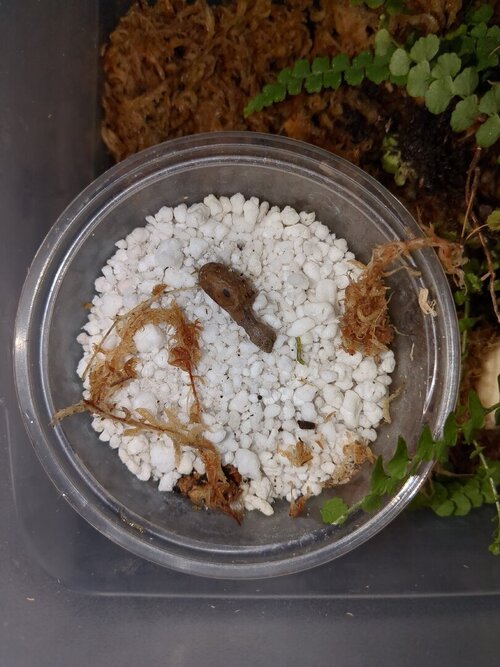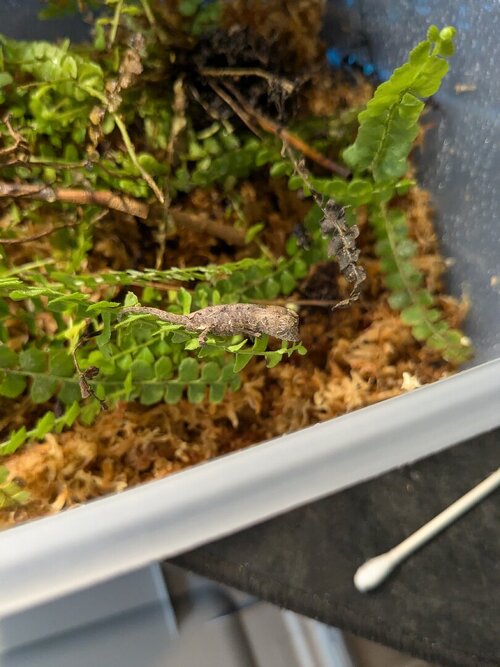Mendez
Chameleon Enthusiast
You can put a slice of banana in with the babies and hope to draw in small flies while you wait for food. When this years Brookesia supercilaris hatched, they were also a surprise. Luckily I had some fungats gnats in there for them to eat. They went 3 or 4 days without me supplying vendor-bought feeders.
A few helpful tips when raising up pygmies is 1) keep them very humid and 2) feed them crickets as soon as you can.
For humidity, I put the pygmies in a clear storage container that you can purchase at Target. I then cut out an rectangle spaning the majority of the lid and hot glued mesh on top. That's the only ventilation they have. I didn't drill any additional holes on the side to get a chimney effect or anything. This holds the humidity quite well.
Since pygmies hatch out pretty small, they really need all the humidity they can get. If they are constantly losing water from low humidity, their bodies won't grow as much, or as fast.
As for the crickets, I noticed that this years babies have grown significantly faster than last years. I never bought fruit flies. I skipped them and fed pinhead crickets. Just make sure you are getting true pinheads. True pinheads are smaller than melanogaster fruit flies. And I always buy around 500 of them. When first feeding, they are a little small. But after a week or so, those crickets are slightly bigger so I feed a little less. It ends up working pretty well. Its more expensive, but totally worth it.
A few helpful tips when raising up pygmies is 1) keep them very humid and 2) feed them crickets as soon as you can.
For humidity, I put the pygmies in a clear storage container that you can purchase at Target. I then cut out an rectangle spaning the majority of the lid and hot glued mesh on top. That's the only ventilation they have. I didn't drill any additional holes on the side to get a chimney effect or anything. This holds the humidity quite well.
Since pygmies hatch out pretty small, they really need all the humidity they can get. If they are constantly losing water from low humidity, their bodies won't grow as much, or as fast.
As for the crickets, I noticed that this years babies have grown significantly faster than last years. I never bought fruit flies. I skipped them and fed pinhead crickets. Just make sure you are getting true pinheads. True pinheads are smaller than melanogaster fruit flies. And I always buy around 500 of them. When first feeding, they are a little small. But after a week or so, those crickets are slightly bigger so I feed a little less. It ends up working pretty well. Its more expensive, but totally worth it.








